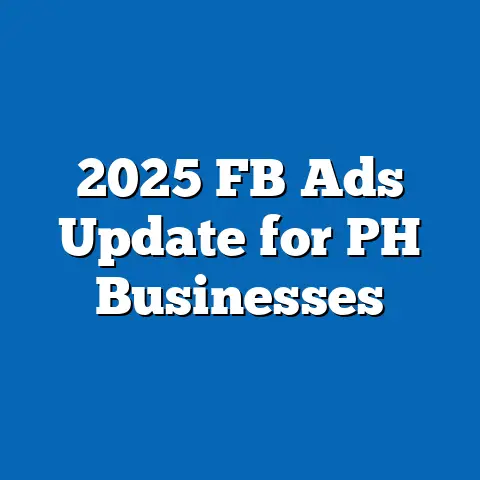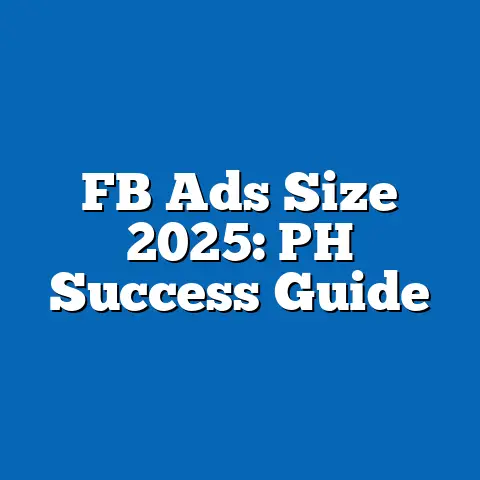Unlock Success: Top Facebook Ads Targeting Tools in BD
Unlock Success: Top Facebook Ads Targeting Tools in BD
Introduction: The Endurance of Effective Facebook Advertising
When I first started handling Facebook advertising campaigns for small and medium-sized businesses (SMBs) in the Philippines and Bangladesh, I learned that success is never instantaneous. It requires endurance—a steady commitment to learning, testing, and refining. Facebook ads are powerful but complex, with many layers beneath simple clicks and impressions. To truly win in this space, I had to build patience and develop a strategic mindset rooted in understanding key targeting tools and metrics.
One memorable experience was working with a local food delivery startup in Dhaka. Initially, their Facebook ads barely moved the needle. They spent thousands of Bangladeshi takas with limited orders. But by sticking with the campaign—analyzing the data daily, adjusting target audiences based on Facebook’s Audience Insights, leveraging Pixel data for retargeting, and refining creatives—they finally hit their stride. Within three months, their orders increased by 40%, and their customer acquisition cost dropped by 25%.
This journey taught me an important lesson: Facebook ads success isn’t just about flashy creatives or big budgets—it’s about endurance coupled with smart use of Facebook’s targeting tools and interpreting the right metrics. In a market as competitive and budget-sensitive as Bangladesh’s, this approach can mean the difference between wasting money and growing your business steadily.
Why Facebook Ads Metrics Matter for Filipino SMBs in Bangladesh
Facebook offers some of the most powerful digital advertising tools globally. But in Bangladesh, where many SMBs operate on tight budgets and face fierce competition from both local and international brands, every peso counts. Understanding Facebook ads metrics helps you:
- Avoid wasting budget on ads that don’t perform.
- Identify your most responsive audiences to target better.
- Optimize ads for higher return on investment (ROI).
- Make informed decisions quickly based on real data.
- Measure campaign success beyond vanity metrics like likes or impressions.
For Filipino SMBs operating in Bangladesh or targeting Filipino communities within BD, this is particularly crucial. Many businesses still struggle with limited marketing knowledge or reliance on traditional advertising methods. Facebook advertising provides a cost-effective way to reach thousands of potential customers—but only if you understand how to use its tools properly.
Top Facebook Ads Targeting Tools in BD: Complete Breakdown
1. Facebook Audience Insights: Your Starting Point for Deep Customer Understanding
What is Facebook Audience Insights?
Facebook Audience Insights is a free tool that delivers detailed demographic, geographic, behavioral, and interest data about people on Facebook. It allows you to explore various audience segments before launching your campaign.
Why is it Important?
For Filipino SMBs in Bangladesh, understanding local preferences, cultural nuances, and online behaviors is vital. Audience Insights reveals such information as:
- Age and gender breakdown
- Top cities and regions where your audience lives
- Language spoken
- Interests (e.g., cricket fans, local cuisine lovers)
- Purchase behavior (online shoppers vs casual browsers)
- Device usage (mobile vs desktop)
This data helps craft highly relevant ad campaigns tailored to the specific tastes and habits of your target market.
How to Use Audience Insights Effectively
- Define your core customer profile: Start by inputting basic demographics like age range and location.
- Dive into interests: For example, if you sell beauty products, check how many people are interested in “makeup,” “skincare,” or local beauty influencers.
- Explore purchasing behavior: Are your potential customers more likely to shop online regularly or only occasionally?
- Adjust language settings: In Bangladesh, while Bengali is dominant, many urban users also prefer English or regional languages.
How Does It Relate to Other Metrics?
Audience Insights informs your targeting setup in Ads Manager. Better audience definition typically leads to higher CTR (Click-Through Rate) because your ads resonate more deeply. This also lowers CPM (Cost Per Mille), meaning you pay less per impression.
Practical Case Study
A Dhaka-based fashion retailer used Audience Insights to discover that 70% of their audience were women aged 18-35 living in urban centers like Dhaka and Chittagong. They also found these women were heavy mobile users who engaged with fashion-related pages during evening hours. Based on this insight:
- The retailer scheduled ads during peak engagement times.
- Designed mobile-first creatives.
- Targeted interests around “local fashion” and “style bloggers.”
The result? A 35% increase in CTR and a 20% reduction in cost per click within two months.
2. Facebook Pixel: Track Real Actions Beyond Clicks
What is Facebook Pixel?
Facebook Pixel is a snippet of code you install on your website that tracks user actions like page views, add-to-cart events, purchases, signups, etc., after interacting with your ad.
Why Should Filipino SMBs Care?
Pixel provides detailed conversion data that raw clicks don’t show. It connects your ad spend directly to business outcomes like sales or leads—a crucial insight for SMBs managing tight margins.
How to Interpret Pixel Data?
Suppose your campaign shows 1,000 clicks but only 20 purchases tracked by Pixel. This discrepancy indicates issues:
- Landing page might be slow or confusing.
- Offer may not be attractive enough.
- Checkout process might be complicated.
Pixel data allows you to pinpoint these gaps instead of guessing blindly.
Integration with Other Metrics
Pixel data feeds into conversion rate calculations, CPA (Cost Per Acquisition), and ROAS (Return On Ad Spend). It also enables retargeting—showing ads to users who didn’t convert initially but showed interest.
Practical Example
A Bangladeshi electronics store noticed many users added products to carts but did not complete purchases. Using Pixel data:
- They created a retargeting campaign offering a 10% discount for cart abandoners.
- Adjusted ad messaging emphasizing limited stock urgency.
Within four weeks, conversion rate improved from 1.5% to 3%, while CPA dropped by 30%.
3. Facebook Ads Manager Targeting Options: The Core of Your Campaign Reach
What Targeting Options Does Ads Manager Offer?
Ads Manager lets you build precise target audiences using:
- Location (country, city, region)
- Demographics (age, gender, language)
- Interests (sports, hobbies, entertainment)
- Behaviors (purchase history, device usage)
- Connections (people connected to your page or app)
Why Is This Vital for SMBs in Bangladesh?
Bangladesh’s diverse population means one-size-fits-all targeting won’t work efficiently. For example:
- Urban vs rural users have different purchasing behavior.
- Language preferences vary widely.
- Interests tied to cultural events can be leveraged seasonally.
Ads Manager gives you control over these variables so you can pinpoint your ideal customers.
How to Test Targeting Combinations?
I always recommend running multiple small test campaigns with different targeting sets rather than one big campaign. You can compare which groups:
- Have the highest CTR
- Convert best
- Give you the lowest CPA
This iterative testing saves money and improves performance over time.
Relation to Other Metrics
Targeting precision affects CPM and CTR directly. Broad targeting might lower CPM but reduce ad relevance—causing lower CTR and conversions.
Example from Experience
A garment business initially targeted all adults across Bangladesh but found CPM high at ₱100 with low engagement. Narrowing focus to women aged 20–35 interested in “fashion trends” in Dhaka cut CPM by 30%, while CTR doubled from 0.7% to 1.4%.
4. Lookalike Audiences: Expand Reach Without Blind Guesswork
What Are Lookalike Audiences?
Lookalike Audiences allow advertisers to target new users resembling their existing customers based on behaviors or demographics from Pixel data or customer lists.
Why Is This Tool Powerful?
Instead of guessing who might like your product, Facebook finds people similar to those who already bought or interacted with your brand—boosting chances of conversion.
How to Use Lookalikes Effectively
- Use high-quality source audiences like top buyers or repeat customers.
- Choose appropriate audience size—small percentage lookalikes are closer matches but smaller reach; larger percentages give more reach but less precision.
Impact on Metrics
Lookalike audiences tend to increase conversion rates while lowering CPA compared with broad interest targeting.
Case Study
An online bookstore in Bangladesh used Lookalikes from their top 1,000 customers’ email list. Results after six weeks:
- CPA dropped by 22%
- Conversion rate increased from 2% to 3.5%
- Monthly revenue increased by 30%
5. Detailed Targeting Expansion: Discover Hidden Audiences Automatically
What Is Detailed Targeting Expansion?
When enabled, this feature allows Facebook to expand your manual targeting criteria automatically if it predicts better results.
Why Should Marketers Use It Cautiously?
It can help uncover relevant audiences you might have missed but may also increase costs if misused.
How To Monitor Expansion Effectiveness?
Track your CTR, CPM, and conversion rates closely when enabled versus disabled.
Real-Life Example
A travel agency enabling detailed targeting expansion saw a 15% increase in reach without increasing budget. Bookings rose by 12%, confirming expansion helped find new interested users without sacrificing cost-efficiency.
Deep Dive into Essential Facebook Ads Metrics for Filipino SMBs in BD
Understanding your tools is critical—but interpreting the right metrics is even more important for making smart decisions. Below are five key metrics I always monitor closely when managing campaigns:
1. Click-Through Rate (CTR)
- Definition: Percentage of people who clicked your ad after seeing it.
CTR=(ClicksImpressions)×100\text{CTR} = \left(\frac{\text{Clicks}}{\text{Impressions}}\right) \times 100
- Importance: High CTR indicates ad relevance and effective messaging.
- Interpretation: A CTR under 1% usually signals poor targeting or creative issues.
- Related Metrics: CTR impacts Quality Score which affects CPC (Cost Per Click).
Example:
A local café’s original ad had a CTR of 0.8%. After tightening audience interests to “coffee lovers” and “local event attendees,” CTR rose to 1.5%, reducing CPC by 20%.
2. Conversion Rate
- Definition: Percentage completing desired action after clicking.
Conversion Rate=(ConversionsClicks)×100\text{Conversion Rate} = \left(\frac{\text{Conversions}}{\text{Clicks}}\right) \times 100
- Importance: Shows how well your landing page or offer converts clicks into customers.
- Interpretation: Low conversion despite high CTR suggests problems post-click.
Example:
An apparel brand raised conversion rate from 2% to 5% by improving website speed and checkout flow after analyzing Pixel data.
3. Cost Per Acquisition (CPA)
- Definition: Average cost spent for one conversion.
CPA=Total Ad SpendNumber of Conversions\text{CPA} = \frac{\text{Total Ad Spend}}{\text{Number of Conversions}}
- Importance: Directly affects profitability; lower CPA means more efficient spending.
Example:
A tech startup lowered CPA by 35% using Lookalike Audiences based on high-value customers instead of broad interest targeting.
4. Frequency
- Definition: Average number of times an individual sees your ad.
Frequency=ImpressionsReach\text{Frequency} = \frac{\text{Impressions}}{\text{Reach}}
- Importance: Too high frequency causes ad fatigue; too low limits impact.
Example:
A fitness center’s CTR dropped sharply after frequency hit 4; rotating creatives helped maintain engagement.
5. Return on Ad Spend (ROAS)
- Definition: Revenue earned per peso spent on ads.
ROAS=Revenue from AdsAd Spend\text{ROAS} = \frac{\text{Revenue from Ads}}{\text{Ad Spend}}
- Importance: The ultimate measure of campaign success.
Example:
A restaurant optimized location-based targeting during lunch hours achieving ROAS of 3x—meaning ₱3 earned for every ₱1 spent.
Additional Facebook Ads Targeting Tools Worth Exploring
Beyond these core tools and metrics, some advanced features can further boost your campaign effectiveness:
A. Custom Audiences from Customer Lists
Upload customer emails or phone numbers to target existing customers for loyalty campaigns or cross-selling.
Tip: Make sure data is clean and permission-based to comply with privacy norms.
B. Dynamic Ads for Retargeting
Show personalized product ads based on user behavior tracked via Pixel—for example, highlighting products users viewed but didn’t buy.
C. Automated Rules in Ads Manager
Set rules like pausing ads with CPA above a threshold or increasing budget for high ROAS campaigns automatically—saving time on manual monitoring.
D. Split Testing (A/B Testing)
Run tests on different creatives or targeting options simultaneously to scientifically identify winners before scaling budgets.
Common Challenges Filipino SMBs Face With Facebook Ads Targeting & How to Solve Them
Challenge #1: Limited Budget Makes Testing Difficult
Solution: Start with small daily budgets (₱50–₱100) focused on well-researched audience segments using Audience Insights before scaling.
Challenge #2: Lack of Technical Know-how for Pixel Installation
Solution: Use simple tutorials or hire freelancers who can set up the Pixel correctly; it’s an investment that pays off quickly through better tracking.
Challenge #3: Difficulty Interpreting Complex Metrics
Solution: Focus first on core metrics—CTR, CPA, ROAS—and use simple dashboards provided by Facebook Ads Manager tailored for beginners.
Challenge #4: High Competition Leading to Rising CPM
Solution: Use narrow targeting combined with Lookalike Audiences; rotate creatives frequently; test off-hours schedules when competition is lower.
Extended Case Study: Growing a Handmade Jewelry Business Using Facebook Ads Targeting Tools in BD
A handmade jewelry business in Dhaka struggled with stagnant online sales despite running frequent Facebook ads with broad targeting.
Step-by-Step Approach:
- Installed Facebook Pixel — Tracked user behavior from ads through checkout.
- Used Audience Insights — Found primary buyers were women aged 25–40 interested in “handcrafted goods,” “local fashion,” plus followers of popular Bangladeshi influencers.
- Created Lookalike Audiences — Based on past purchasers identified through Pixel data.
- Tested multiple ad sets — Comparing interest-based vs lookalike audiences.
- Enabled detailed targeting expansion carefully — To reach new potential customers without losing cost efficiency.
- Monitored frequency closely — Rotated creatives every three weeks to avoid ad fatigue.
Results Over Four Months:
| Metric | Before Optimization | After Optimization | % Change |
|---|---|---|---|
| CTR | 0.7% | 1.6% | +129% |
| Conversion Rate | 1.2% | 3.8% | +217% |
| CPA | ₱220 | ₱135 | -39% |
| ROAS | 0.9x | 2.8x | +211% |
| Monthly Revenue | ₱80,000 | ₱170,000 | +112% |
This case emphasizes how combining tools systematically leads to sustainable growth even with modest budgets common among Filipino SMBs operating in Bangladesh.
Best Practices for Filipino SMBs Using Facebook Ads Targeting Tools in BD
- Start Small But Think Big: Begin with limited budget tests focused on well-defined audiences using Audience Insights.
- Install Pixel Early: Without Pixel data you’re blind post-click—don’t skip it even if it seems technical.
- Leverage Lookalike Audiences Regularly: They expand reach efficiently when sourced from quality customer lists or website visitors.
- Analyze Metrics Weekly: Don’t wait until campaigns fail; make incremental improvements based on CTR, CPA, ROAS trends.
- Rotate Creatives Frequently: Keep visuals fresh every few weeks to prevent ad fatigue especially if frequency rises above 3.
- Localize Content & Targeting: Incorporate cultural touchpoints relevant to Bangladesh’s diverse population—language preferences, festivals like Eid or Pohela Boishakh matter!
- Use Automated Rules & Split Testing: Save time and ensure continuous improvement through Facebook’s built-in tools.
- Keep Learning And Adapting: The digital landscape evolves fast—stay updated on new features and market trends through webinars or community groups focused on Filipino advertisers in BD.
Final Thoughts: Turning Data Into Decisions That Drive Growth
From my years working closely with Filipino SMBs navigating Facebook’s complex ad ecosystem in Bangladesh, I can say that success boils down to two things:
- Using the right targeting tools thoughtfully — Audience Insights for deep understanding; Pixel for real action tracking; Lookalike Audiences for growth; Ads Manager options for precision; plus expansion features for discovering new markets.
- Interpreting key metrics wisely — Focus on actionable KPIs like CTR, conversion rate, CPA, frequency, and ROAS rather than vanity stats.
The endurance I mentioned at the start means continuously testing hypotheses against data and iterating—not giving up when initial results aren’t perfect but learning fast from each campaign cycle.
By applying these principles within the local context of Bangladesh’s competitive but opportunity-rich market—and blending them with Filipino cultural understanding—you can unlock real growth from your Facebook advertising efforts.
Remember: every peso matters here—and using Facebook’s powerful tools combined with clear metric insights ensures each peso works harder towards building your business success story!






